How To Install Plastic Screen Protector
The holidays are swiftly approaching, which means that many people are thinking about new tech both for themselves and to give to others. According to NPD Group, tech is one of the most popular gifting categories around the holiday season, and just like clockwork, major tech companies like Apple, Google and Samsung have announced new models of their popular phones in time for holiday shopping. But if you're planning on gifting or upgrading to any of these new models, you might want to think about protective accessories that'll keep that new phone safe from falls, bumps and long-term wear. A screen protector can protect your phone screen from cracking or shattering if you ever drop your device, but with so many options on the market, it can be difficult to decide which one to buy.
To help you choose the right screen protector for your phone — regardless of brand or model — we consulted tech experts on the differences in materials, features and application methods for the various protectors available.
SKIP AHEAD The best screen protectors, according to experts
Should you get a screen protector?
Experts told us screen protectors are the best way to minimize cracks in, scratches on or the shattering of your physical screen. While they vary in price, most aren't terribly expensive: Plastic ones typically cost less than $15, while glass screen protectors range from around $10 to upward of $50.
Sagi Shilo, editor at Tech Gear Talk, noted it's worth investing in a good screen protector to avoid potentially shelling out hundreds of dollars to replace a broken display. Plus, he noted that an intact display is one major factor in determining the value of a used device if you want to resell or trade it in for a newer model in the future.
Scratching or damaging your screen is easier than you might think. If you carry your phone in your purse, backpack or pocket with change or keys, the screen "can easily get visible scratches from [those] hard surfaces," which can "weaken the integrity of the original display and cause cracks more easily," said Arthur Zilberman, president of tech repair company Laptop MD.
There are limitations to what a screen protector can do, though: "It isn't going to cover every square millimeter of the glass display," said Mac Frederick, owner of Phone Repair Philly. The protector also usually won't protect the back, edges and corners of your phone — the experts we spoke to suggested pairing a screen protector with a heavy-duty case from brands like Otterbox or Lifeproof, preferably one with rubber edges that'll absorb the impact of a drop and prevent damage.
"People forget that the back of many phones is made of glass, and are shocked at the cost of replacement once the back gets damaged," said Shilo.
The best screen protectors to shop in 2021
Since we don't test screen protectors ourselves, we rely on expert guidance about how to shop for them. The tech experts we interviewed recommended each of the following screen protector brands and products — their listed features align with our research, and each one is highly rated.
Best all-around screen protector: Spigen
Spigen iPhone 13/13 Pro Screen Protector EZ FIT GLAS.tR
Spigen was a top brand recommended by our experts. Zilberman noted the Spigen EZ Fit tempered glass screen protector is case-friendly and affordable for the quality. He noted its ease of installation also makes it worth considering: It includes an alignment tray that you place on top of your phone screen and press down on to put the glass in place. You get two screen protectors with each purchase, in case you ever need to replace the first one.
Spigen offers the EZ Fit screen protector for the iPad, Apple Watch and all iPhone models (including the new iPhone 13 series). It's also available for some Galaxy watch and phone models, as well as other smartphone models.
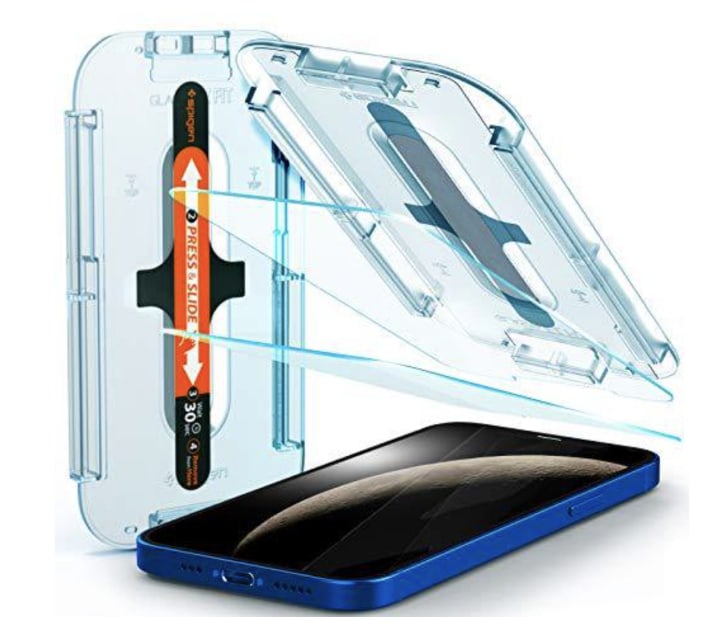
Best affordable screen protector: Trianium
Ailun Glass Screen Protector
If you're looking for a relatively affordable option, Zilberman recommended this tempered glass screen protector from Ailun. It features a clear, water-resistant and oleophobic screen coating that protects against sweat and oil residue from your fingerprints, according to the brand. The box comes with three screen protectors — the downside is that the product includes guide stickers rather than an installation tray, so it may be a little trickier to get the product on your screen.
Ailun screen protectors are currently available for several devices, including Apple's iPad, Samsung's Galaxy devices, Amazon's Kindle and more.
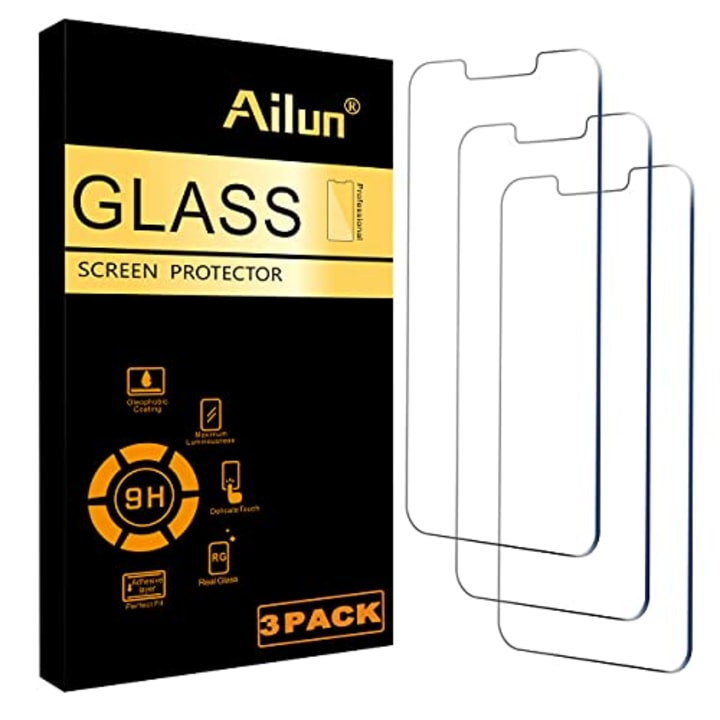
Best blue light filtering screen protector: ZAGG
ZAGG InvisibleShield Glass Elite VisionGuard Screen Protector
ZAGG, which Frederick recommended due to its "price and value," offers several durable tempered glass options through its InvisibleShield line, which is available for iPhone devices, Android devices, tablets, smartwatches and more. The Glass Elite VisionGuard protector hides the visibility of fingerprints on your screen and filters out blue light using a protective layer, according to the brand. You can use the included apply tabs and installation tray to best align the protector with your screen, and the brand says it contains an antimicrobial treatment to prevent odor-causing bacteria.

Best durable screen protector: Belkin
Belkin UltraGlass Screen Protector
Sean Agnew, a professor of materials science and engineering at the University of Virginia, noted this Belkin screen protector features a material called lithium aluminosilicate, which is the basis of some glass-ceramic products like shock-resistant cookware and glass-top ranges. According to the brand, the material is double-ion exchanged, meaning it "allows for extremely high levels of residual stress [to] offer great protection against cracking," Agnew said. However, he added that like most screen protectors, this is not an indestructible product.
Belkin's UltraGlass protector is currently only available for the iPhone 12 and iPhone 13 series. However, Belkin offers several other highly rated options across devices like Apple's Macbook and Samsung's Galaxy devices.
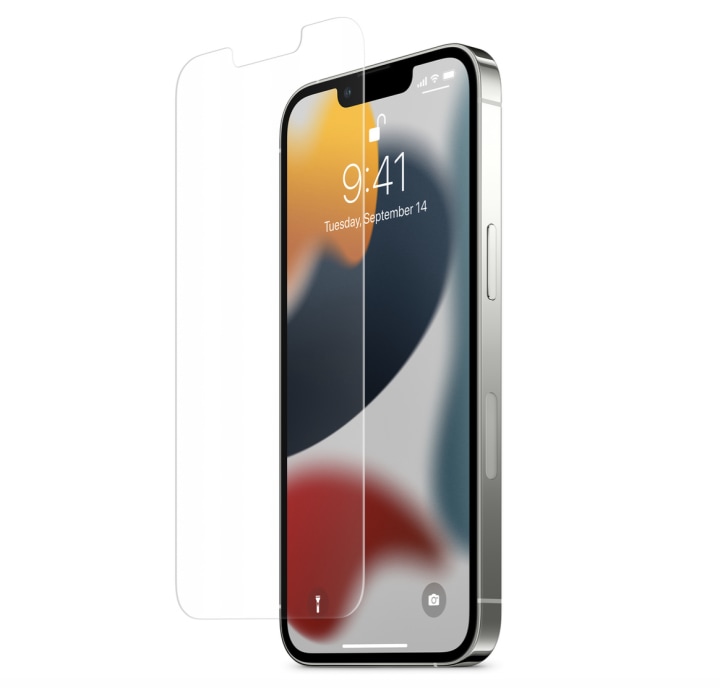
Best comfort screen protector: Supershieldz
Supershieldz Tempered Glass Screen Protector
Frederick said Supershieldz is one of his favorite brands for tempered glass phone cases due to its durability and affordability. This pack comes with three screen protectors, all of which are made with high-quality tempered glass. The screen protectors have rounded edges for comfort and feature an oleophobic coating that repels sweat and oil from your fingers, according to the brand.
Supershieldz's tempered glass screen protectors are available for devices from Apple, Samsung, Google, LG and more.
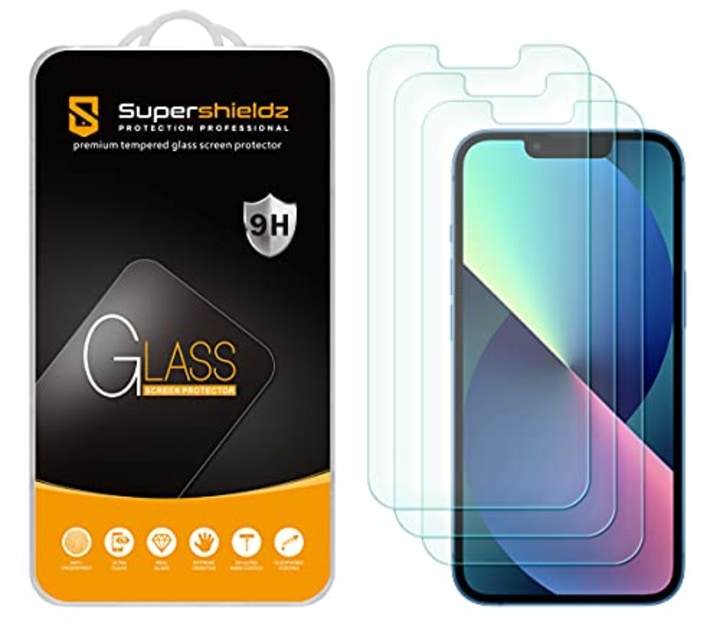
Best privacy screen protector: ZAGG
ZAGG InvisibleShield Glass+ Defense Elite Privacy Screen Protector
Privacy screen protectors can be a great option for people who conduct business on their phone or don't want others to see what's on their screen — ZAGG provides several options to choose from across devices from Apple and Samsung. The brand's privacy protectors, made from a hybrid glass material, add a two-way filter that prevents others from looking at your phone screen when viewed from the side, according to the brand.
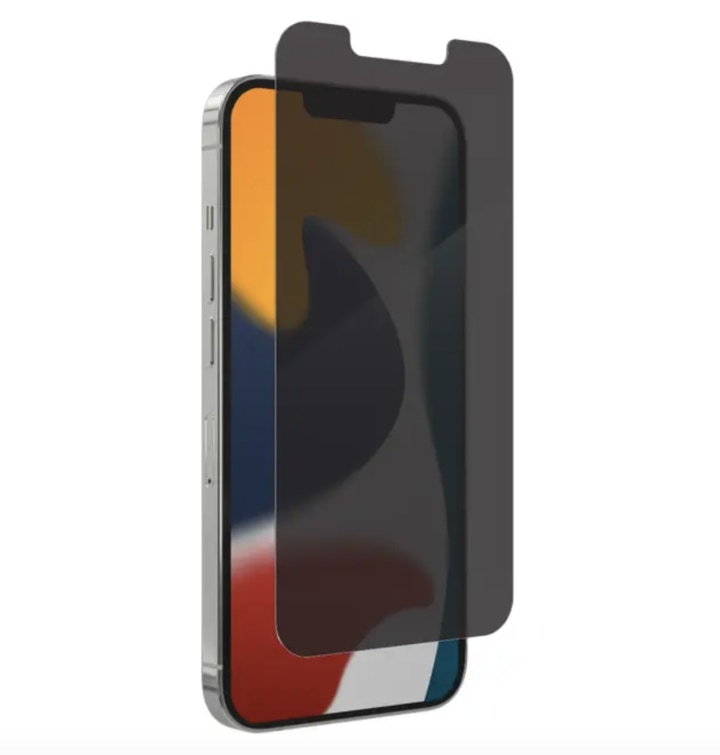
What to look for when shopping for a screen protector
When shopping for a screen protector, Shilo recommended looking at features like material, comfort and ease of installation. Zilberman noted that while you can get plenty of high-quality protectors at an affordable price, he doesn't recommend sacrificing performance for a cheaper option.
Material
Screen protectors come in a variety of materials — there are plastics like polyethylene terephthalate (PET) and thermoplastic polyurethane (TPU), as well as tempered glass (with some even boasting chemically strengthened glass, like Corning's Gorilla Glass protectors).
The experts we consulted agreed that a quality tempered glass protector will be most effective at protecting your display compared to plastic protectors. Tempered glass is a stronger material because it can absorb the impact if your phone falls and "withstand higher levels of stress at its surfaces," said Agnew.
Plastic screen protectors can be great for protecting from superficial scratches and similar imperfections, and "they're cheap and readily replaceable," said Agnew. Soft and flexible TPU material, for example, has self-healing properties that allow it to sustain low-impact and minor scratches without damaging its composition. Generally, though, plastic films aren't stiff or strong, so they don't offer as much protection from high-impact falls and scratches.
Comfort and feel
Since we interact with our phones via touch, the feel and comfort of using a screen protector is important to consider. Screen protectors can sometimes change the touchscreen's sensitivity — certain smartphone models ask you to input whether or not you're using a screen protector on the device to better calibrate sensitivity, said Zilberman.
Tempered glass is designed to have a smoother feel than other types of screen protectors and won't affect touchscreen sensitivity, according to the experts we spoke to. Unlike a plastic protector, tempered glass can feel "identical to not having a screen protector at all," said Shilo.
Display
Tempered glass mimics the original display and offers good clarity, whereas plastic screen protectors can create an unsightly glare and affect screen quality by adding a "murkier and grayer hue to your screen," said Zilberman. Both plastic and tempered glass protectors can feature privacy and anti-glare filters to fit your preferences. However, tempered glass protectors are more physically noticeable on your screen since they're thicker — a plastic protector blends in remarkably well with the original display, experts noted.
Ease of installation
Installing a screen protector can be difficult, especially when there's a chance of misaligning the protector or having annoying air bubbles and specks of dust lodged underneath the film. Most screen protectors include a plastic installation tray that can go directly over your phone screen to align the protector, or one that holds your phone while you guide the screen on. Some protectors will come with "guide stickers" that show you where the screen protector will lie on your screen, but Shilo said he prefers the trays because they're easier to line up and don't require several attempts.
Compatibility
According to Frederick, there isn't much variation in terms of how well a screen protector works from one smartphone brand to another. However, screen protectors do come in different shapes and sizes depending on your phone, so it's always good to check its compatibility.
Catch up on Select's in-depth coverage of personal finance, tech and tools, wellness and more, and follow us on Facebook, Instagram and Twitter to stay up to date.
How To Install Plastic Screen Protector
Source: https://www.nbcnews.com/select/shopping/best-screen-protectors-ncna1283808
Posted by: hagersaidom.blogspot.com

0 Response to "How To Install Plastic Screen Protector"
Post a Comment